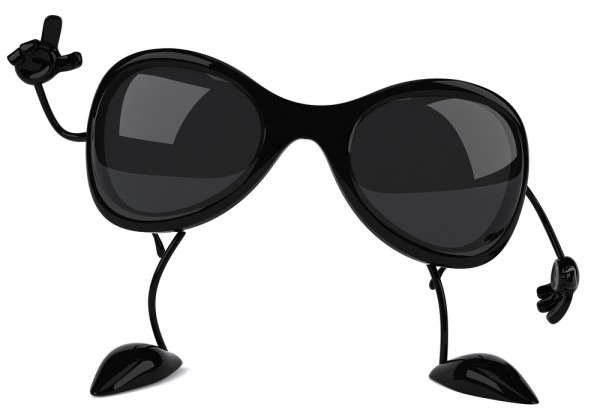
Twelfth in a series. Here’s a dirty little secret: I’m still using Windows XP.
That’s right. A technology analyst -- independent, mind you; not working for a firm that requires a specific load -- and I’m voluntarily using XP. In fact, I’m writing this article on it. I’ve been using it so long, I almost stopped noticing, and as XP crossed the 10-year anniversary of its official launch this week, I thought some about my own experiences with it.
Now, before you condemn me as a total luddite, let’s be clear: I’ve got lots of Windows 7 and even Vista machines running around the office (and a couple of Macs, for that matter), and I use them as well, all synched up with SugarSync (the one they never mention these days when they’re talking about how cool DropBox is).
But the old AMD desktop powering two big monitors is still my base system. It’s odd, in a way, because I have not one, not two, but three Win7 desktops piled up next to this one, ready to go when it dies.
So, why do I cling to XP when most others have moved on? Here are a few of the reasons.
I like to have each folder view retain its own setting. So, in the My Documents view, I prefer to see midsize icons in alphabetical order. Down at the My Documents\vendors\Chip Companies\Intel level, I can see files in Details view in reverse chronological order (newest first). In the My Pictures view, I like thumbnails. I prefer the subfolders to stay out of the way when I’m viewing by chronology.
In Win7, all folder views change at once whenever I change any of them, which means I am constantly having to adjust my view -- every time I want to see anything. Extra steps. Why can’t the folder just remember how I viewed it last time and stay that way? As it does in XP.
When I want to launch Word in XP, I hit two buttons: Start and the letter “w” and up comes a blank doc. In Win7, the sequence is Start, “w,” and Enter -- three buttons. Extra steps.
In XP, I use the My Documents folder as my desktop. Sometimes I put files or folders in a certain order for specific reasons. A folder containing my work in progress may be on the bottom right, separated from the other folders, because I’m working on it. Files that I’ve saved out for further study are in the order I want to read them. In XP, these items stay where I put them.
But Win7 is much smarter than me, and it thinks they should be in whatever view I last told all my folders to be in. I cannot move things around on my desktop. Win7 has a death grip on all my stuff.
And while we’re on folder views, what the heck is the difference between arrange, sort and group? In Win7, I have all these "choices" and within each, more choices: arrange by author, sort by name, group by date modified. Who has time for all these extra steps? And anyway, once I’ve spent all this time (which I can’t bill back to Microsoft) setting my view just right, it simply changes next time I adjust my view somewhere else in the file system. Why go to all that trouble just to have the OS throw my work out?
Why break things that work? Why bother with extra steps? Why is Microsoft still developing software that is convenient for the company rather than for its users?
It’s not like there are no improvements in Win7. Maybe people, including me, have praised it extravagantly.
Windows XP takes a lot longer to boot, but it’s been years since I established a protocol of powering on before going into the kitchen to make coffee and coming back when SugarSync is finished scanning my hard drive.
Win7 has cooler utilities and media handling, but many of these apps are available through Windows Live, making XP still pretty cool.
If I may observe, the process of continuously developing software and obviating older software seems analogous to the process that movies go through. In 1969, Henry Hathaway made a John Wayne classic called "True Grit" that embodied Wayne’s persona as a tough, dry wrangler trying to do the right thing. Why, in 2010, should the Coen brothers remake the same movie, a retread which, while fine in its own right, will never be a classic? Why downgrade a work of art that was already all it could be?
Because living artists need to eat. Plain and simple. John Wayne is done eating, but the Coen brothers need to put that new pool house on the side deck near the recreation area. In the Maslovian hierarchy of needs, the Coen brothers are way beyond needing to eat. But you get the idea.
Microsoft brings out new editions of Windows because it needs to eat, not because users need better software.
I leave you with this YouTube video, a lovely low-production-value musing on the nature of operating systems and their continuous frenzied development:
Photo Credit: Julien Tromeur/Shutterstock
 Roger Kay is president of Endpoint Technologies Associates, an independent technology market intelligence company. Previously, has was vice president of Client Computing at IDC, covering desktop and notebook PCs. Before that, he ran his own research practice, directed operations for a software developer, ran a technology practice for a consulting company, managed international accounts for a hardware manufacturer and developed new products for a network services firm.
Roger Kay is president of Endpoint Technologies Associates, an independent technology market intelligence company. Previously, has was vice president of Client Computing at IDC, covering desktop and notebook PCs. Before that, he ran his own research practice, directed operations for a software developer, ran a technology practice for a consulting company, managed international accounts for a hardware manufacturer and developed new products for a network services firm.

